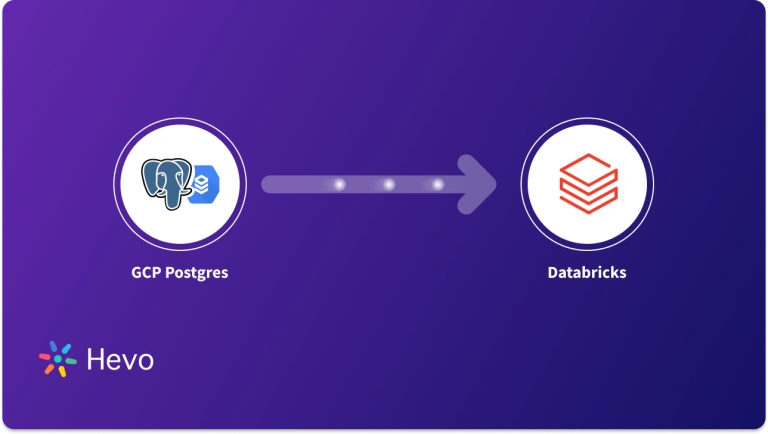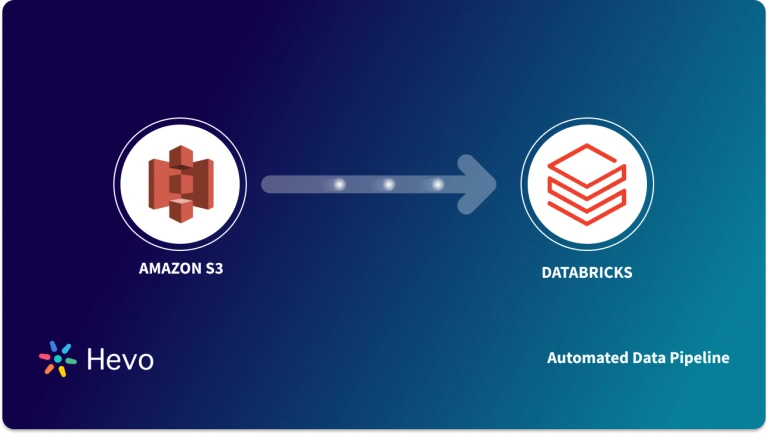Enhancing customer satisfaction through well-laid-out market strategies is an essential component that can help organizations increase sales and scale business. Salesforce Marketing Cloud (SFMC) is one of the major marketing platforms that allows you to create campaigns to enhance customer experience.
It is challenging to perform analytics and handle large amounts of data on SFMC. Integrating this marketing data into a data warehousing service platform like Databricks can enable you to extract valuable insights and make data-driven decisions.
Databricks provides an analytical environment that can help you recognize patterns in your marketing data and produce better campaigns. This article discusses two prominent methods for integrating data from Salesforce Marketing Cloud to Databricks.
Table of Contents
Why Integrate Salesforce Marketing Cloud to Databricks?
Salesforce Marketing Cloud Databricks integration can offer multiple benefits. Here are some of the key advantages of this integration:
- Databricks provides a unified data governance platform for managing and performing analytics.
- You can quickly access the data in Databricks for business reporting purposes. Databricks SQL—a cloud data warehouse—offers cost-effective, high-performance data warehousing services.
- Databrick’s Photon feature allows faster performance for the repeatedly accessed data from the disk cache.
An Overview of Salesforce Marketing Cloud
Salesforce Marketing Cloud (SFMC) is a digital marketing platform that works as cloud marketing software that allows you to manage campaigns. It can help you create marketing content that caters to the specific needs of your business’s customers.
With SFMC’s Journey Builder, you can create specialized campaigns based on customer behavior, demographics, and communication channel preference. It provides features like monitoring social media engagement, email marketing, and automation.
An Overview of Databricks
Databricks is a data analytics and warehousing service platform with built-in AI, machine learning, and data science features. Its highly interactive user interface gives you an affordable storage solution for running analytical queries. Notebooks allow you to utilize the potential of Python, R, and Scala with SQL to produce compelling visualizations and dashboards.
The Unity Catalog feature of Databricks provides a unified data governance model to manage privileges and access control permissions.
Methods to Connect Salesforce Marketing Cloud to Databricks
If you are wondering how to connect Salesforce Marketing Cloud to Databricks. This section highlights two prominent methods for exporting data from Salesforce Marketing Cloud to Databricks file.
- Method 1: Integrate Salesforce Marketing Cloud to Databricks Using Hevo Data
Simplify your data pipeline with Hevo’s no-code platform. Automatically sync your Salesforce Marketing Cloud data with Databricks in real-time while leveraging pre-load and post-load transformations to ensure analysis-ready data.
- Method 2: Export Data from Salesforce Marketing Cloud to Databricks Using CSV Transfer
Manually export your data as CSV files and import them into Databricks. While straightforward, this approach requires regular monitoring and lacks real-time updates.
Method 1: Integrating Salesforce Marketing Cloud to Databricks Using Hevo Data
Hevo Data is a no-code, real-time ELT data pipeline platform that cost-effectively automates data pipelines that are flexible to your needs. It integrates data from 150+ data source connectors and loads it into a destination according to your requirements. Hevo’s highly interactive user interface allows you to integrate data without technical assistance.
Here are some of the critical features of Hevo Data:
- Data Transformation: Hevo has built-in Python-based and drag-and-drop data transformation techniques that enable you to clean and transform data, making it analytics-ready.
- Incremental Data Load: Hevo allows modified data transfer in real time, ensuring efficient bandwidth utilization on both the source and destination ends.
- Automated Schema Mapping: It automates schema management tasks by detecting the format of incoming data and replicating it according to the destination schema. With Hevo Data, you can choose between Full & Incremental Mappings according to your specific requirements.
Step 1: Configure Salesforce Marketing Cloud as Source
This section discusses configuring Salesforce Marketing Cloud as a source in Hevo Data. Before going through the steps, ensure you satisfy the prerequisites.
Prerequisites:
- You must have an active Salesforce Marketing Cloud instance to access data.
- You must provide the client ID and secret to enable Hevo to access data from Salesforce Marketing Cloud.
- You must be designated Team Administrator, Pipeline Administrator, or Team Collaborator in Hevo.
After satisfying the prerequisites, you can follow the steps below to set up Salesforce Marketing Cloud as a source:
- Select PIPELINES from the Navigation Bar and click + CREATE on the Pipelines List View.
- Select Salesforce Marketing Cloud on the Select Source Type page.
- Specify the necessary fields on the Configure your Salesforce Marketing Cloud Source page.

- Finally, select TEST CONNECTION and click on TEST & CONTINUE.
Refer to the Hevo Salesforce Marketing Cloud documentation to learn more about the steps involved in setting up Salesforce Marketing Cloud as a source.
Step 2: Configure Databricks as Destination
This section highlights the steps to configure Databricks as a destination. Hevo enables you to integrate Databricks with all the major cloud platforms, including Azure, AWS, and GCP. There are two different methods that you can follow to set up Databricks as a destination in Hevo, including the recommended method, Databricks Partner Connect, and Databricks credentials.
Before getting started, ensure that you satisfy the following prerequisites.
Prerequisites:
- You must have an active AWS, Azure, or GCP account.
- You must create a Databricks workspace on your cloud service account.
- Enable your cloud provider’s IP access lists feature by signing in as Admin.
- You must have the URL of your Databricks workspace. It will be in the https://<deployment name>.cloud.databricks.com format.
- You must create an SQL warehouse or a Databricks cluster.
- You must obtain the Databricks credentials, including the database’s hostname, HTTP Path, and port name.
- You must have the Personal Access Token (PAT).
- You must have a Team Collaborator or any administrator role except Billing Administrator on Hevo.
After satisfying all the prerequisite conditions, follow the steps below:
- Click DESTINATIONS on the Navigation Bar and select + CREATE from the Destinations List View.
- Select Databricks on the Add Destination page.
- Specify the mandatory fields on the Configure your Databricks Destination page.

- Click on TEST CONNECTION and select SAVE & CONTINUE. You can identify the external location for Delta tables by following the instructions.
To learn more about configuring Databricks as a destination in Hevo, refer to Databricks Hevo Documentation.
Method 2: Export Data from Salesforce Marketing Cloud to Databricks File Using CSV Transfer
This section discusses the CSV export/import approach to move data from Salesforce Marketing Cloud to Databricks. But before getting into the steps involved, ensure you enable Export Email Allowlist. Then, follow these steps to export data from Salesforce Marketing Cloud:
Step 1: Export Marketing Cloud Data to Your Local Machine
- In the Email Studio of Salesforce Marketing Cloud, select Subscribers.
- Select Data Extensions and click on the desired data extension that you intend to export.
- Click Export and mention the necessary fields:
- Data Extension: Mention the name of the data extension. Select FTP data transfer if the file size is more than 20 megabytes.
- Filename: The name for the exported file.
- File Type: Mention CSV as the file type.
- Export Options: You can specify multiple options, including column headers, compressing the file, and encrypting the file.
- Delivery Location: Specify the location where to export the file.
- Finally, click Export.
For more information on exporting files from Salesforce Marketing Cloud, refer to Salesforce Marketing Cloud data export documentation.
Step 2: Loading CSV Data into Databricks
- Log in to your Databricks account.
- From the Navigation Pane, select Data and then click on Add Data.
- From the Data sources option, click on Upload data.
- Browse and find the data file from your machine and upload it. After the file uploads, you can choose from multiple editing options available on the uploaded file.
- Finally, click on the Create table option.
To learn more about data ingestion to Databricks with add data UI, refer to Databricks data ingestion.
Limitations of Using CSV File Transfer Method
Although the CSV file transfer method efficiently moves data from Salesforce Marketing Cloud to Databricks, it has some limitations.
- Lack of Automation: This method lacks automation, as it requires you to move data by exporting and importing files manually, increasing the time needed for data integration.
- Lack of Real-Time Data Updation: Any change occurring on the source end is not reflected in the destination table, leading to inconsistency in data between source and destination. You must keep repeating the data integration process to achieve this real-time factor.
Use Cases of Integrating Salesforce Marketing Cloud to Databricks
- Integrating data from Salesforce Marketing Cloud to Databricks can provide end-to-end MLOps and artificially intelligent solutions built upon a unified approach to security and governance.
- Moving data from SFMC to Databricks enables you to write code with natural language assistance using its Data Intelligence Engine.
- This data integration process can allow you to take advantage of Databrick’s machine learning feature, enabling you to analyze your marketing data and generate actionable insights.
You can also read more about:
Conclusion
Salesforce Marketing Cloud to Databricks integration provides multiple benefits for managing business marketing strategies. It allows you to generate insights from your marketing campaign data, which can help you create future strategies that cater to your customer needs.
This article uses two methods to discuss the best practices for migrating Salesforce Marketing Cloud data to Databricks. One method discussed is the CSV import/export steps. However, this method has limitations, such as a lack of automation and real-time integration.
To overcome these limitations, you can use Hevo Data’s integration abilities.
Sign Up for a 14-day free trial and experience the feature-rich Hevo suite firsthand. Also checkout our unbeatable pricing to choose the best plan for your organization.
Share your experience of Salesforce Marketing Cloud to Databricks integration in the comments section below!
Frequently Asked Questions (FAQs)
What are the ways to sync data from Databricks to Salesforce Marketing Cloud?
There are multiple ways to connect Databricks to the Salesforce Marketing Cloud.
Manual Uploads: This is the most basic approach to perform this integration. But you must remember it can become time-consuming and error-prone.
API Connection: This method integrates data using an API connection. However, it requires technical expertise to conduct.
What are the benefits related to the ROI of marketing services such as Salesforce Marketing Cloud?
Salesforce Marketing Cloud’s ROI depends on who is using it and what the purpose behind the use is. It provides open data architecture, enabling you to build your customer data model with easy-to-use tools. SFMC provides automation features to automate your marketing workflow. Integrating data from Salesforce Marketing Cloud to an analytics platform like Databricks can give you an edge over your competitors.









